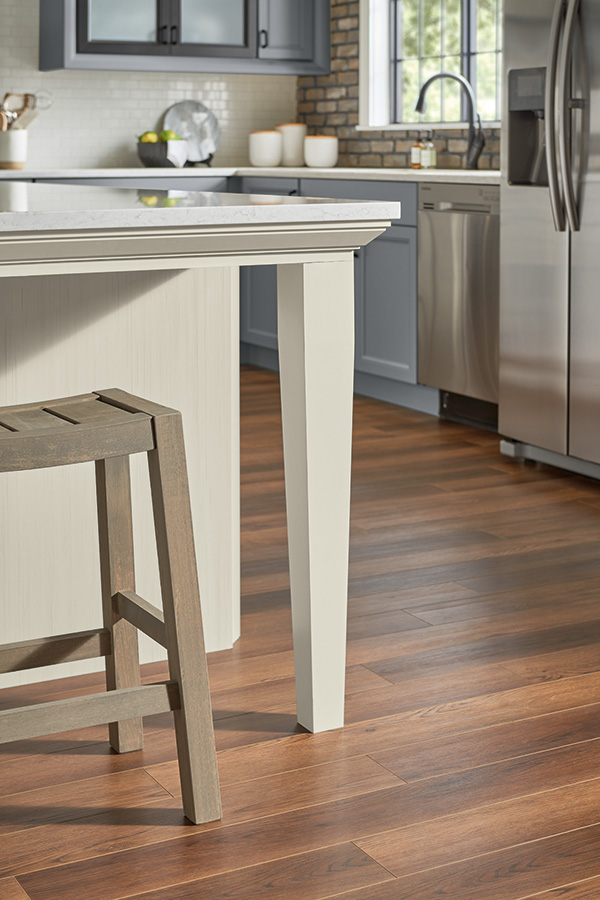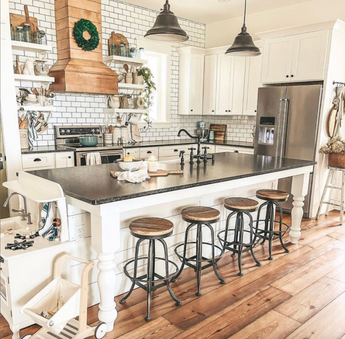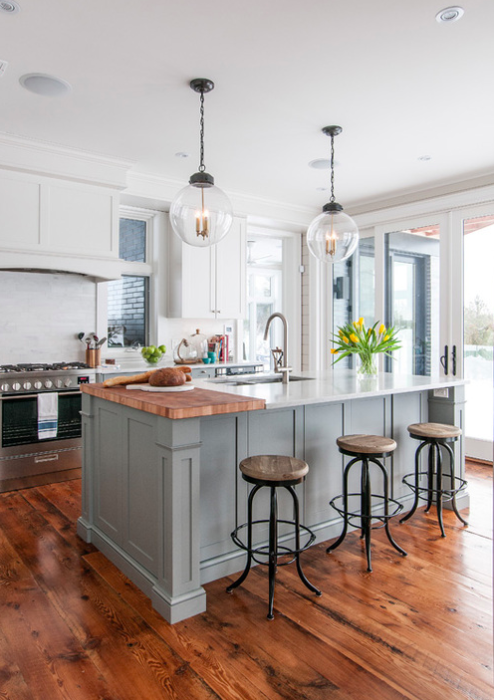An Overview to Picking the Perfect Kitchen Area Island for Your Home
Understanding your cooking area's spatial characteristics is the preliminary action, making sure that the island fits flawlessly without disrupting the circulation. The choice of coatings and materials also plays a vital function in harmonizing the island with your kitchen's general design.
Analyzing Your Space
Before selecting a cooking area island, it is vital to extensively analyze your area to make sure the addition will certainly be both useful and aesthetically pleasing. Begin by determining the readily available area, consisting of the width, length, and height of the kitchen area. Accurate measurements are essential to stay clear of buying an island that overwhelms the space or one that is overmuch little.
Consider the existing design and just how the island will certainly integrate with the existing web traffic circulation. A well-placed island needs to not block pathways or hamper accessibility to essential appliances, such as the refrigerator, stove, and sink. Leave appropriate clearance space-- typically around 36 to 48 inches on all sides-- to enable comfortable movement and work area efficiency.
Following, review the all-natural light and sightlines within your cooking area. An island that blocks a home window or disrupts aesthetic cohesion can make the room really feel dark and confined. Assume about how the island's positioning will certainly influence lighting and exposure, guaranteeing it boosts instead of interferes with the kitchen's setting.
Establishing the Objective
Identifying the objective of your kitchen area island is an essential step in guaranteeing it meets your certain requirements and choices. Prior to delving into design or size factors to consider, it is essential to clarify what primary feature the island will certainly serve in your kitchen. Will it be a central hub for meal prep work, a laid-back eating location, or perhaps an extra storage service?
Furthermore, adequate counter space for mixing and cutting, along with available storage space for kitchen tools and active ingredients, can change the island right into an efficient workstation. Conversely, if the island is planned to serve or facilitate social interactions as an eating area, seating setups come to be paramount.

Picking the Right Size
Selecting the appropriate size for your kitchen island is a balance of performance and space optimization. An optimal kitchen island ought to supply ample work space while guaranteeing that motion around the kitchen remains unimpeded. Begin by measuring your cooking area space; a minimum clearance of 36 to 42 inches around the island is essential to permit comfy motion and access.
The dimensions of the island ought to reflect its designated use. If the island will offer primarily as a prep location, a width of why not try this out 24 to 36 inches could suffice. If it is to accommodate seating, you ought to consider a bigger dimension, usually measuring at least 48 inches in width. Islands dedicated to sinks or home appliances might require extra space to house these attributes properly.

Last but not least, make sure that the island's dimension matches the general kitchen format, staying clear of any kind of frustrating presence that could take away from the cooking area's visual and energy - kitchen island legs. Mindful planning and specific measurements will certainly assist you achieve a reliable and unified cooking area atmosphere
Finding Materials and Finishes
After establishing the ideal size for your kitchen island, the following action involves choosing ideal products and finishes. The choice of materials considerably affects both the aesthetic charm and capability of your go to my site cooking area island. Popular materials for kitchen counters include butcher, granite, and quartz block, each offering distinctive benefits. Granite, known for its toughness and ageless sophistication, is extremely immune to scrapes and warmth. Quartz, an engineered rock, offers a non-porous surface area that resists microorganisms and stains. Butcher block, made from hardwood, adds a warm, rustic beauty and is suitable for food prep work.
Along with the counter top, consider the materials for the space station. Strong wood supplies a classic, sturdy appearance, while stainless-steel offers a streamlined, modern-day look and is very easy to tidy. Repainted finishes can present a splash of shade, with alternatives ranging from soft pastels to bold, dynamic shades.
Pay focus to the resilience of surfaces, specifically in high-traffic areas, to preserve the island's look over time. Selecting the ideal materials and finishes Learn More Here will enhance both the functionality and aesthetic charm of your cooking area island.
Including Functional Attributes
Including functional attributes right into your kitchen area island can significantly enhance its energy and comfort, transforming it right into a versatile centerpiece of your kitchen. One vital attribute to consider is added storage space. Integrating cabinets, drawers, and open shelving can offer much-needed area for kitchenware, tools, and tiny appliances, helping to keep a clutter-free atmosphere.
One more valuable enhancement is an integrated sink or cooktop, which can enhance dish preparation and clean-up processes. A sink can help with jobs such as cleaning veggies and cleaning up recipes, while a cooktop can enable food preparation straight on the island, promoting a more interactive and social cooking experience.
Consider integrating seating options, particularly if your kitchen functions as an informal dining location. Bar feceses or built-in benches can transform the island right into a multifunctional area for dishes, research, or casual events.
Lastly, integrating electric outlets into your kitchen area island can improve its functionality. Outlets offer convenient access for small cooking area devices, charging terminals for digital gadgets, and additional illumination alternatives.
Verdict

Before choosing a cooking area island, it is crucial to extensively analyze your space to make certain the enhancement will be both practical and cosmetically pleasing.Choosing the appropriate size for your kitchen island is a balance of functionality and room optimization. kitchen island legs. An optimal kitchen island need to offer enough office while making sure that movement around the cooking area stays unimpeded.Incorporating functional functions into your kitchen area island can significantly improve its energy and ease, transforming it into a versatile focal point of your kitchen.In final thought, picking the perfect cooking area island necessitates a thorough analysis of the readily available space, quality concerning its main feature, and mindful factor to consider of the appropriate size and products